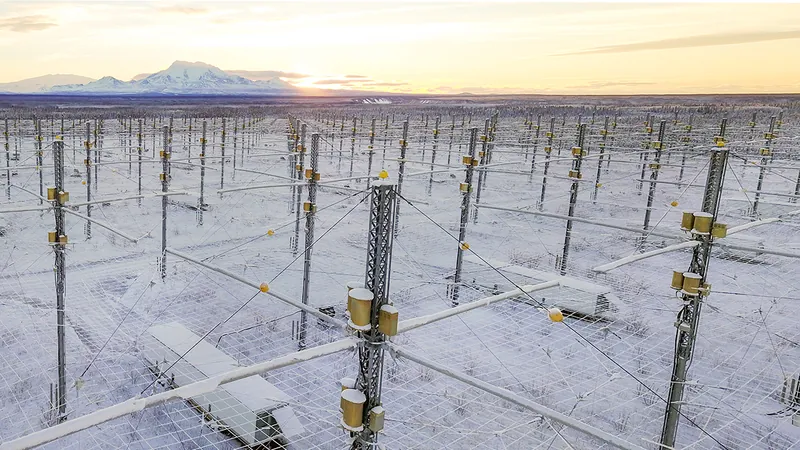
Unlocking the Secrets of Earth's Ionosphere by Nudging It!
2025-06-17
Author: Wei Ling
What Lies Above Us?
Soaring between 50 and 1,000 kilometers above our planet is the enigmatic ionosphere, a dynamic layer of Earth's atmosphere teeming with charged particles, including both ions and loose electrons. This invisible shield plays a crucial role in altering electromagnetic waves, such as radio and GPS signals, making its study a goldmine for enhancing our communication and navigation technologies.
The Power of Radio Waves!
Enter the fascinating technique of 'nudging' the ionosphere with powerful radio waves emitted from the ground. These waves momentarily heat the ionosphere, transforming the arrangement and density of charged particles into intriguing patterns known as artificial periodic inhomogeneities (APIs). These patterns can be detected by observing how they scatter radio signals, providing an unprecedented glimpse into the ionosphere's make-up and dynamics.
A New Frontier in Research!
Pioneering researchers La Rosa and Hysell took API research to the next level by exploring all three primary regions of the ionosphere—the D, E, and F regions—rather than focusing solely on the E region, which had been the norm. Their groundbreaking study analyzed data from a 2014 experiment at the High-frequency Active Auroral Research Program (HAARP) in Alaska, where radio transmitters created small disturbances in the ionosphere.
Unveiling the Bigger Picture!
While initial examinations of the 2014 data uncovered some APIs in the E region, La Rosa and Hysell's deeper, high-resolution analysis achieved what had never been done before: documenting simultaneous APIs across all three regions, all initiated by a single radio nudge. This comprehensive approach promises to clarify the complex processes that influence ionosphere behavior.
Modeling the Mystery!
The formation of APIs varies by region, influenced by chemical interactions, heating effects, and density fluctuations of charged particles, which previously hindered the development of a universal model. To tackle this, the researchers adapted an existing model focused on the E region to encompass the D and F regions as well. The new simulations not only replicated the observed patterns but also deepened our understanding of the underlying physics at work in this magnetic layer.
A Leap Towards the Future!
By unlocking the mysteries of the ionosphere, this innovative research could revolutionize our grasp of atmospheric science and enhance technologies that depend on precise signal transmission. Get ready to embrace a future where communication is sharper, clearer, and more efficient, thanks to our endeavors in nudging the ionosphere!


 Brasil (PT)
Brasil (PT)
 Canada (EN)
Canada (EN)
 Chile (ES)
Chile (ES)
 Česko (CS)
Česko (CS)
 대한민국 (KO)
대한민국 (KO)
 España (ES)
España (ES)
 France (FR)
France (FR)
 Hong Kong (EN)
Hong Kong (EN)
 Italia (IT)
Italia (IT)
 日本 (JA)
日本 (JA)
 Magyarország (HU)
Magyarország (HU)
 Norge (NO)
Norge (NO)
 Polska (PL)
Polska (PL)
 Schweiz (DE)
Schweiz (DE)
 Singapore (EN)
Singapore (EN)
 Sverige (SV)
Sverige (SV)
 Suomi (FI)
Suomi (FI)
 Türkiye (TR)
Türkiye (TR)
 الإمارات العربية المتحدة (AR)
الإمارات العربية المتحدة (AR)